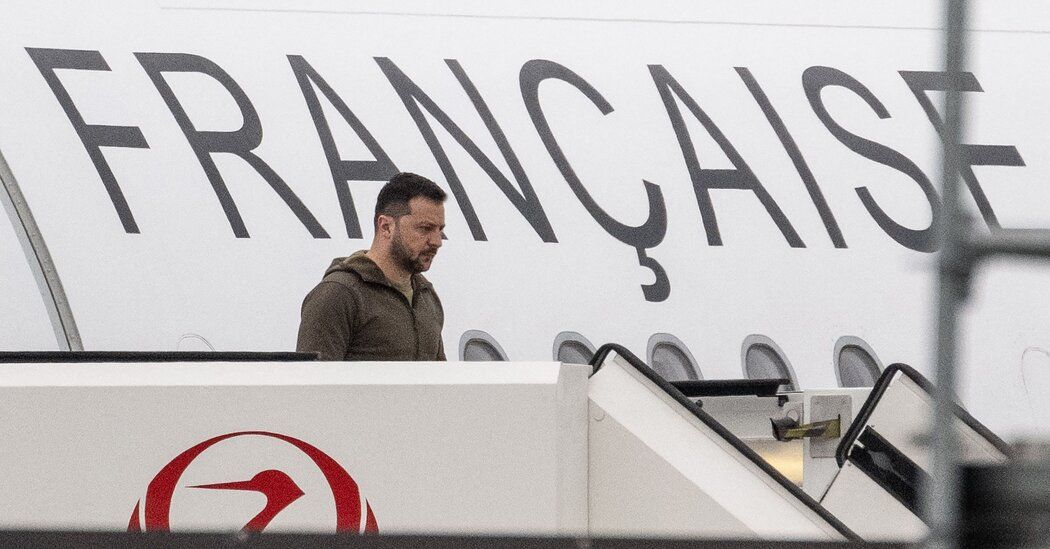Russia-Ukraine War
At the beginning of the war in Ukraine, President Biden told the country’s president, Volodymyr Zelensky, that he could not have American precision missile systems. The White House feared they could tip Russia into reaching for its tactical nuclear weapons.
Then he allowed them.
The same dynamic infused debates over providing tanks several months ago. Now Mr. Biden, who in February rejected F-16 fighter jets as unnecessary, met in Hiroshima on Friday with leaders of other major democracies and told them that he would allow Ukrainian pilots to be trained on the American-made warplanes. He added that in a few months, the allies would figure out how to begin delivering modern Western fighters to a Ukrainian force struggling to keep an aging, dwindling fleet of pieced-together, Soviet-made fighters in the air.
It all raises the question: Are there any conventional weapons in the American or NATO arsenals that the president would not, eventually, provide to Ukraine?
Washington’s pattern of saying no before saying yes has repeated itself enough times over the past 15 months that Ukrainian officials say they now know to ignore the first answer and keep pressing. White House officials insist this reflects not indecision, but changing circumstances — and changing assumptions about the risks involved.
“When it comes to the question of escalation, of course, the United States government is a learning organism,” Jake Sullivan, Mr. Biden’s national security adviser, said on Saturday morning in Hiroshima. “This conflict has been dynamic. It has unfolded over time.” So, he said, Mr. Biden’s decisions have kept up with Ukraine’s changing needs.
In the weeks after the invasion, the teetering Ukrainian government needed Stinger missiles and other anti-tank systems. When the war shifted to the south and the east of the country, with big open plains, they needed artillery and air defenses — and 155-millimeter howitzer shells. And while Mr. Biden does not believe fighter jets will play an important role in the conflict for a while, providing them is part of thinking about how to defend Ukraine for the long term — after the current phase of the war is over.
That suggests the administration and its allies now believe that even if there is a negotiated end to the fighting — perhaps a Korea-like armistice — Ukraine will need a long-term capability to deter an angry, sanctioned Russia. In that case, the F-16 decision may be the best evidence yet that the administration believes that while Ukraine will survive, some level of conflict could exist for years, if not decades.
In a briefing to reporters on Saturday, Mr. Sullivan repeated Mr. Biden’s two touchstones: “Support Ukraine and its defense and its sovereignty and territorial integrity” while proceeding “in a way that avoids World War Three.”
The latter is a phrase Mr. Biden has used often with his staff. But the thinking behind what it means to avoid World War III has evolved. Weapons that Washington thought might set off escalation have turned out not to do so. As recently as five months ago, White House officials were worried that Mr. Putin would conclude that his army will take a decade to rebuild after the disaster it has brought on itself. That would leave him with only two viable options: using his formidable cyberweapons to cripple infrastructure, or threatening to use his nuclear arsenal, in hopes of freezing Western aid to Ukraine.
So far Mr. Putin has been cautious with his cyber-capabilities: He has used them extensively against targets in Ukraine, American and British officials say, but has been reluctant to attack NATO nations and risk bringing them directly into the conflict. And after China’s leader, Xi Jinping, explicitly warned late last year against threatening the use of nuclear weapons, Mr. Putin has quieted down.
But few think that is for long. No one knows what might trigger Mr. Putin, though Russian officials have specifically warned against giving Ukraine ATACMS, a long-range precision missile system made by Lockheed Martin that would enable Mr. Zelensky to target Crimea, and Russian bases there, from afar.
Some experts warn that Mr. Putin hasn’t dropped his nuclear threats; just delayed them. “Putin is not waiting for a misstep by the West,” wrote Kevin Ryan, a former defense attaché at the American embassy in Moscow, writing recently in “Russia Matters,” a website run by the Belfer Center for Science and International Affairs at Harvard that examines Russia’s strategic choices.
“He has been building the conditions for nuclear use in Ukraine since early in the war and is ready to use a nuclear weapon whenever he decides, most likely in response to his faltering military’s inability to escalate as much as he wishes by conventional means,” wrote Mr. Ryan, a retired brigadier general, who directs back-channel talks with retired Russian military officers.
Source: The New York Times


